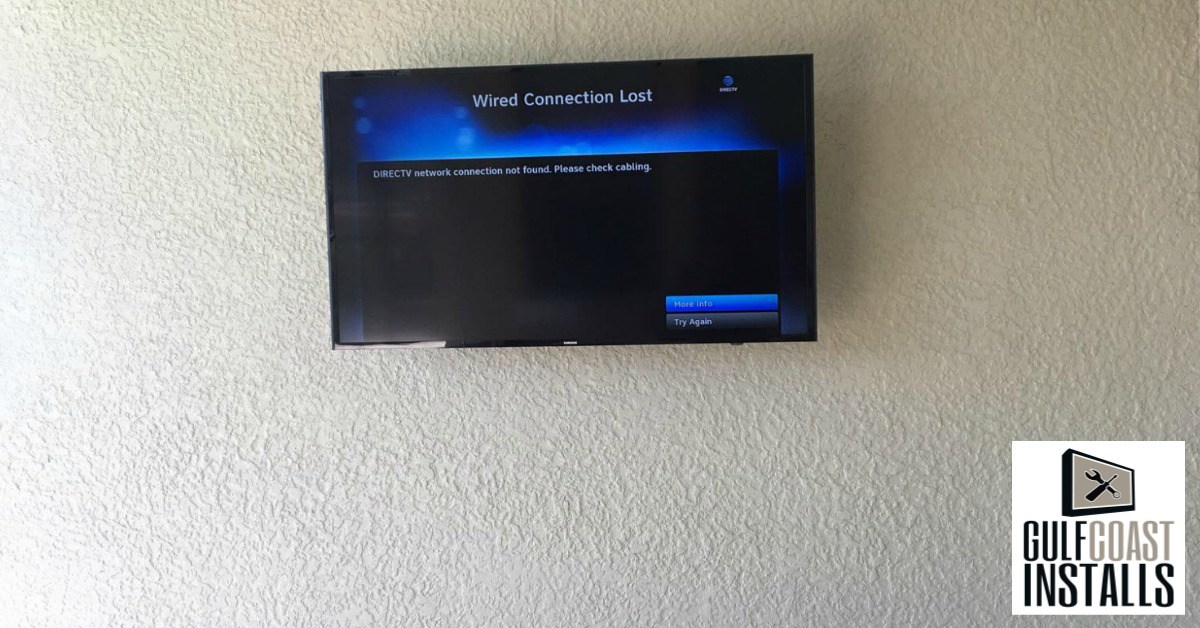Naples TV installation company, Gulf Coast Installs, gets plenty of TV installation questions, but perhaps one of the biggest topics of confusion is audio and visual cables. Before homeowners set an appointment for a TV installation technician to drop by they understandably want to have all of the right cables on hand for their TV hookup. Unfortunately, there are quite a few different types of cables and picking the wrong one can really impact the quality of your TV signal. So, to help clear things up a little bit, let’s take a quick look at the different cable types and what they each do!
Your Naples TV Installation Company Explains Audio and Video Cables
Audio Cables
When it comes to audio cables, there are analog and digital. Both types of cable transmit sound but analog cables transmit sound through electrical signals and digital cables transmit sound through binary code digitally. Of the two types of cable, digital cables provide a better quality signal and are the most often used by your local Naples TV installation company.
Analog Audio Cables
Coaxial RF cable – A coaxial cable is used to transmit dual-channel stereo signal with an analog video signal. This is the most basic type of cable there is.
Dual RCS cable – The dual RCS cable is a standard audio cable that most people are familiar with, it has a white plug for the left speaker and a red plug for the right speaker.
Multichannel RCA connection – The multichannel RCA connection audio cable is used to transmit multichannel music formats and is another fairly standard cable.
SACD cable – A failed audio cable option SACD was a high-resolution audio cable that was used during the recording process and could also be used to connect to Blu-Ray and HD-DVD Surround sound Audio Formats and Dolby Digital, Dolby Digital Plus, Dolby TrueHD, DTS, and DTS-HD Audio.
DVD-audio cable – The DVD-audio cable directly competed with the SACD cable and provided high fidelity audio in digital format on a DVD. Similar to the SACD cable, the DVD-audio cable is considered to be “extinct”.
XLR cable – The XLR cable is used to deliver a balanced audio signal with less outside interference especially for microphone and line-level signals over long distances.
Digital Audio Cables
Coaxial digital cable – The coaxial digital cable can carry up to six audio channels which make it ideal for 5:1 digital surround sound.
Optical cable – The optical cable uses light pulses to transmit digital audio signal which makes the quality of the signal perfect.
High-def multimedia interface (HDMI) cable – The HDMI cable is the best audio cable option available. The HDMI cable can carry as many as eight audio channels as well as a video signal. This is the only cable option that can carry 6:1 and 7:1 sound formats.
Video Cables
Coaxial cable – The coaxial cable offers the poorest picture quality with a maximum resolution of 350i. This type of cable is most often used to connect your VCR to your entertainment system or as a longer run cable between your receiver and cable TV entry point or satellite dish.
Composite cable – The composite cable provides a better quality signal than the coaxial cable but is still quite limited. The maximum resolution for this type of cable is 480i and it’s most often used for analog TV or VCR connection.
S-video cable – The S-video cable offers a better quality signal than the coaxial or composite cable, but still only gives an average signal. The maximum resolution for this type of cable is 480i and it’s most commonly used to connect to digital TV, DVD players, gaming consoles, and DVRs.
Component cable – The component cable provides a much better quality signal than any of the previous cables and has a maximum resolution of 1080p. This type of cable is most often used to connect to HDTV, DVD players, non-HD digital TV, DVRs, and gaming consoles.
Firewire cable – The firewire cable provides a better quality signal with 1080p resolution but is generally only used to connect camcorders or external hard drives to your entertainment system.
DVI cable – The DVI cable also offers a better quality signal with 1080p maximum resolution and is most commonly used to connect to personal computers and HDTV.
HDMI cable – The HDMI cable also offers a better quality signal with 1080p maximum resolution and is the most commonly used cable. This cable is most often used to connect to blu-ray players, HDTV, HD DVR’s, gaming consoles, and personal computers.
A Note About Quality of Materials
Any Naples TV installation expert will tell you that the quality of materials used in the construction of a cable will determine how well the cable is able to filter out interference. The better quality materials, the better quality the signal, however, better quality materials will also increase the cost of your cable.
There are a variety of conductors that are used in audio and video cables, these include silver, copper, gold, tin, nickel, and steel. Of these conductors, silver is the best option for your cables because it is the best conductor. Copper is the second best conductor and is a cheaper option than silver. Gold is often used as plating for audio and video connectors because it doesn’t oxidize. Tin is quite resistant to oxidation but is a poor conductor so it is often used to protect copper elements from corroding. Nickel also has good resistance to oxidation and is popularly used in connector plating. Finally, steel is most often used with high-frequency cables that are copper plated that must be particularly strong, but it has very poor resistance to oxidation.
Ready to Have a Naples TV Installation Company Come Do Your Install?
If you’re all set up with the right cables and are ready for your Naples TV installation company to come by and get that TV installed for you, give us a call here at Gulf Coast Installs at (239)-682-1077!






